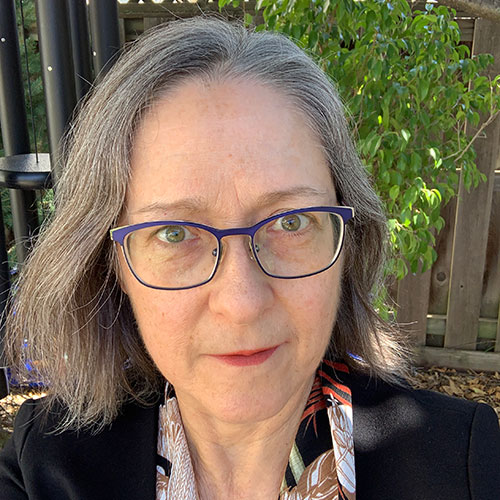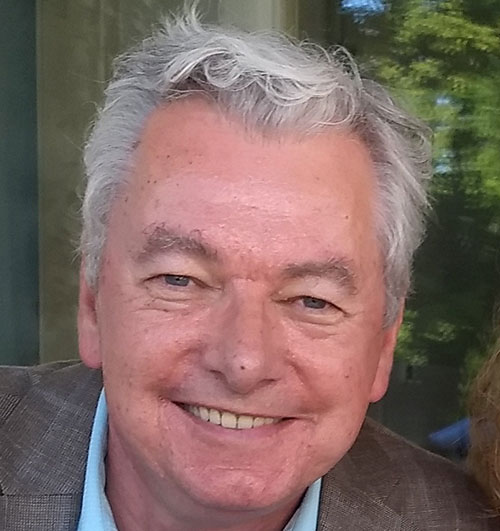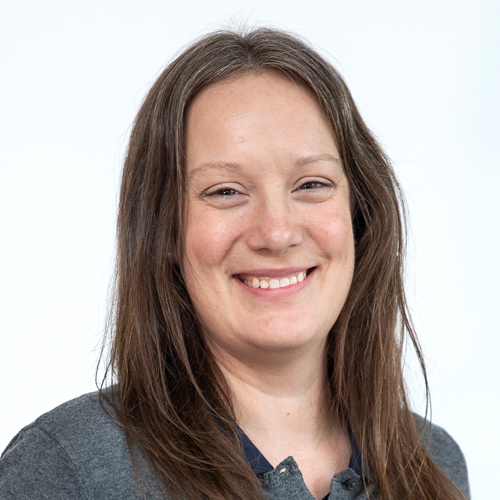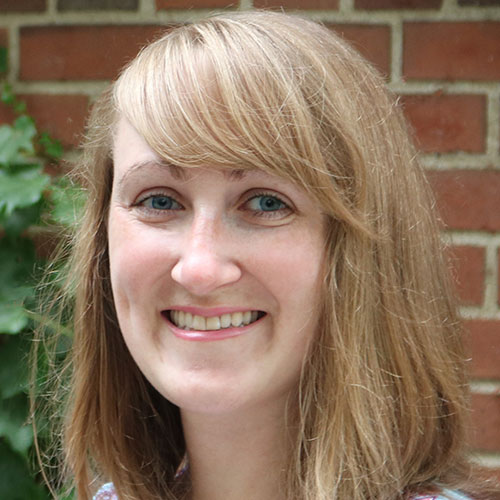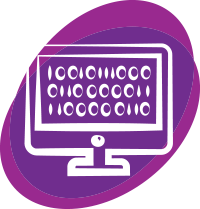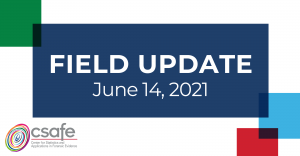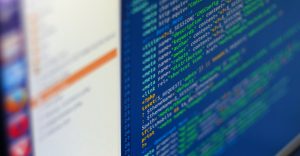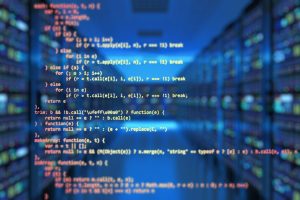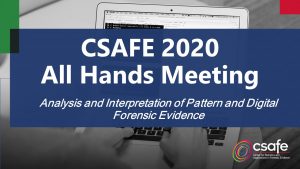Overarching GOALS
From the outset, CSAFE and NIST set out to address the growing demand for forensics tools and methods specifically for digital evidence –– all built on strong probabilistic and statistics foundations.
Digital devices play a central role in modern society and criminal investigations requiring examination of digital devices and digital artifacts are common.
Examples of digital evidence based activities of forensic experts include detecting the use of steganographic algorithms by criminals to hide illicit text or images in otherwise innocent pictures or videos, recovering illicit data/software hidden on phones/tablets, and examining digital traces of user activity (e.g., messages/texts, login events) for signs of criminal activity.
Looking for
WEBINARS,
Short courses, presentations or publications
on Digital Evidence?
Additional Team Members
Roy Maxion
maxion@cs.cmu.edu
Hal S. Stern
sternh@uci.edu
Li Lin
llin@iastate.edu
Barbara Guttmann (NIST) barbara.guttman@nist.gov
focus Areas
The CSAFE team at ISU has developed and made public a reference dataset, StegoAppDB, comprised of more than 960,000 highly-provenanced image data created using our unique approach of modeling the steganography (stego) software applications (because their algorithms are not public). The data is used to develop and test algorithms and create new models of the camera pipeline. The next generation of algorithms for detecting hidden images will rely on deep learning algorithms with millions of free parameters (see, e.g., Boroumand et al., 2019). We are growing the database substantially through automation of the image data collection and stego creation process, such as using a drone to collect copious amounts of image data — in order to allow investigators to work with deep learning methods.
Steganography is a tool to send a secret message hidden in a common medium, like a digital image, so that the very existence of the payload escapes notice. The effort to hide and detect payload are inverse: a developer can easily create an app to hide payload, while steganalysis, or detection of hidden content, by a forensic image analyst requires expert knowledge and often extensive resources. Hundreds of thousands of stego apps have been downloaded for mobile devices, yet, until recently, steganalysis has appeared mainly in academic settings and not specifically for mobile apps.
In CSAFE 1.0, our project focused on the careful construction of the first forensic reference database for stego images created from mobile apps, producing StegoAppDB. StegoAppDB has more than 960,000 innocent and stego images, is fully provenanced and copyright-free, and publicly available online. However, StegoAppDB contains only indoor scenes, a limited number of distinct scenes, and a limited number of auto exposure images. For CSAFE 2.0, we propose to add image data selectively to enhance the attractiveness of StegoAppDB for wider use in the forensic imaging community, in the following manner:
- Add several million outdoor images so that the most successful machine learning techniques, deep learning neural networks, have access to ample data.
- Add images that have been photo-edited before embedding payload, which we suspect is a common occurrence. In fact, it is speculated that image editing operations may affect steganalysis error rates, but little to nothing is known about this, and certainly nothing for mobile stego images.
- Include stego apps beyond those currently in StegoAppDB and create an in-house detection tool for verification of our stego process, since no software package exists specifically to detect stego images created with mobile stego apps. We will use emulators and reverse engineering for the stego app analysis to retain accurate parameters for data provenance.
Our goal is to acquire outdoor scene data in a resource-efficient manner using a car, a bike, and/or a robot, with our in-house camera app Cameraw, taking many photos in an automated fashion, using simple and inexpensive mounts.
To establish support in and partnership with the practitioner community, we propose to conduct a brief survey at the beginning of the project. Its goal is to obtain information on the status quo of steganography in the digital evidence community and establish connections with labs to identify their needs as related to steganography. During meetings at SWGDE in 2019, the PI met Glenn Cavin, Lieutenant, Plano Police Department, Plano, Texas, who has provided a letter of support for his interest in this project. Additionally, note that the detection tool could be of potential interest to forensic practitioners.
The expanded database from combinations of these three image generation methods will allow users access to more realistically simulated evidence for mobile steganography and provide a source of data for tool development of mobile steganalysis. The in-house detection tool might provide insight for such a tool in the long-term.
The goal of this project is to develop new statistical methodologies to support digital forensics in analysis of user-generated event data — focusing on native or cloud-based logged event data from devices such as computers and mobile phones, typically of the form <accountID, timestamp, geolocation, metadata>. The types of forensic questions to be addressed will focus on identity-related questions, such as whether two sets of geolocation events were generated by the same individual or by two different individuals.
The rapid increase in the use of digital devices in the past decade has resulted in significant new challenges for digital forensics. In this context, the goal of this project is to develop new statistical methodologies to support digital forensics in analysis of user-generated event data. The project will focus on native or cloud-based logged event data from devices such as computers and mobile phones, typically of the form <accountID, timestamp, geolocation, metadata>. The types of forensic questions to be addressed will focus on identity-related questions, such as whether two sets of geolocation events were generated by the same individual or by two different individuals. Traditional approaches in statistical forensics, such as likelihood ratios and score-based likelihood ratios, will be extended to handle user-generated event data, particularly data with spatial and spatio-temporal information, building on our prior work in Phase 1 of CSAFE. The extensions will require development of robust and accurate new probabilistic models and fast new algorithms for large data sets. The project will use a variety of different real-world user event datasets as testbeds for development and evaluation. Deliverables from the project will include research papers, tutorial webinars, public testbed datasets and open-source software.
With the EviHunter tools, we are constructing a prototype Android App Evidence Database. In Phase II of the project we plan to extend EviHunter to be able to analyze complex features of Android apps caused by addressing current challenges. With the EviHunter technologies and AED, we expect that forensic investigators will improve their case work in terms of better efficiency, precision and completeness.
The plethora of mobile apps has introduced significant challenges to digital forensics practitioners, due to the large number and diversity of apps, for example over 2.6 million apps on Google Play plus many other apps available from 53 other app stores across the world. The average smartphone user has more than 80 apps on their phone and uses close to 40 of them each month. One chilling fact is that the lack of expert-knowledge about these large number and various types of apps has led to the practitioners’ challenges, including the inability of keeping up with the quick updates of apps on the app markets, discover critical and relevant evidence, or common problems of large casework backlogs in crime labs.
We propose this project that ultimately aims to develop EviHunter, a new path-, context-, flow-sensitive Android application program analysis tool set, to report the list of forensic relevant evidential data generated from the Android apps on a mobile device, by parsing the mobile application installation package using both static and dynamic approaches. During the first five years of the CSAFE project, we developed automated Android app program analysis tools to discover most (if not all) evidential data generated by the apps from a suspect’s mobile device or a remote cloud server. We have developed an award-winning EviHunter toolset (published at ACM CCS 2018 and IEEE SADFE 2018), and with the EviHunter tools, we are constructing a prototype Android App Evidence Database. In the next three years of the project (CSAFE Phase II), we plan to extend EviHunter to be able to analyze complex features of Android apps caused by addressing the following challenges: (1) software obfuscation, (2) limited capability of Soot in generating call graphs, (3) packing/unpacking of apps, (4) native code/3rd-libraries, (5) adapting dynamic Monkey-based tool into better supporting for dynamic EviHunter, and (6) building a better and more complete list of source/sink methods. Also, we will review the design of the prototyped EviHunter tools to optimize the code implementation to reduce the memory space usage and improve the computation complexity. With the deeper knowledge of evidence types and their frequency of usage, we plan to apply statistical methods to focus on more critical program paths inside the apps to speed up the app analysis process.
We also plan to continue to collect and construct (likely the largest) Android App Evidence Database. We will work with Iowa State University Legal Counsel to examine the potential legal issues and make the database accessible to the practitioners.
With the EviHunter technologies and AED, we expect that forensic investigators will improve their case work in terms of better efficiency, precision and completeness, compared against the current mobile device forensic practice that performs (to some extent) a manual process via Cellebrite and other mobile forensic tools. In an ideal case, we hope to reduce the case time (on a mobile device) from one or two days to 10-15 minutes, which will significantly make the practitioners’ life easier.
This project addresses two scenarios. In the specific source scenario, an investigator has two pieces of evidence: a questioned image Q from an unknown camera and a person of interest’s (POI’s) phone. The investigator wants to determine whether Q was captured by a camera on the POI’s phone. In the common source scenario, an investigator has two questioned images Q1 and Q2 from unknown cameras and the investigator wants to determine whether Q1 and Q2 were taken by the same camera. We plan to develop and test an objective, reproducible score-based likelihood ratio (SLR) approach to quantify the similarity between a questioned image Q and a camera fingerprint K from the POI’s phone (specific source scenario) or between two questioned images Q1 and Q2 (common source scenario) on a large, authenticated image dataset that includes multi-camera phones. This approach will enable the investigator to both determine whether image Q originated from a camera on the POI’s phone and to quantify the strength of the evidence.
Currently available authenticated image datasets from mobile phones are limited in the number of models and don’t contain adequate numbers of images for analysis from each available camera on the device. We plan to augment available datasets with authenticated images from a wide variety of phone brands and models, that include multiple phones of each model, and multiple images from each camera on each phone.
Our preliminary results addressing the specific source scenario on a small set of phones shows that if questioned image Q and camera fingerprint K are from cameras of the same model, calculating SLRs with a reference set of close non-matching phones (phones of the same model as the POI’s phone) produces the lowest rate of false inclusions. However, if Q and K are from different models a reference set of close non-matching phones can lead to a higher false inclusion rate than a reference set that uses a variety of models and brands. Thus, knowing the phone model that captured Q is important knowledge for the investigator. If this result persists on the larger dataset, we will develop a method to estimate the likelihood that Q originated from a specific brand and model of phone.
Knowledge transfer
Page 2 of 3
A Forensic Analysis of Joker-Enabled Android Malware Apps
Type: Presentation Slides Research Area(s): Digital
Published: 2021 | By: Chen Shi
This project aims at developing a set of automated Android Malware vetting tools to discover all the malicious behaviors of Android Malwares in the forms of files in the local storage, SQLite database, or data sent to remote 3-party server(s).…
LogExtractor: Extracting Digital Evidence from Android Log Messages via String and Taint Analysis
Type: Publication Research Area(s): Digital
Published: 2021 | By: Chris Chao-Chun
Mobile devices are increasingly involved in crimes. Therefore, digital evidence on mobile devices plays a more and more important role in crime investigations. Existing studies have designed tools to identify and/or extract digital evidence in the main memory or the file…
Forensic Analysis on Joker Family Android Malware
Type: Publication Research Area(s): Digital
Published: 2021 | By: Chen Shi
Android is the most popular operating system among mobile devices and the malware targeted explicitly for Android is rapidly growing and spreading across the mobile ecosystem. In this paper, we propose a hybrid analysis of Android malware to retrieve evidential…
Source-Anchored, Trace-Anchored, and General Match Score-Based Likelihood Ratios for Camera Device Identification
Type: Publication Research Area(s): Digital,Forensic Statistics
Published: 2022 | By: Stephanie Reinders
Forensic camera device identification addresses the scenario, where an investigator has two pieces of evidence: a digital image from an unknown camera involved in a crime, such as child pornography, and a person of interest’s (POI’s) camera. The investigator wants…
CSAFE 2021 Field Update
Type: Presentation Slides,Webinar Research Area(s): Bloodstain,Digital,Firearms and Toolmarks,Footwear,Forensic Statistics,Handwriting,Implementation and Practice,Latent Print,Training and Education
The 2021 Field Update was held June 14, 2021, and served as the closing to the first year of CSAFE 2.0. CSAFE brought together researchers, forensic science partners and interested community members to highlight the organization’s achievements, identify areas for…
Algorithms in Forensic Science: Challenges, Considerations, and a Path Forward
Type: Webinar Research Area(s): Digital,Implementation and Practice
This CSAFE webinar was held on May 25, 2021. Presenter: Henry Swofford Ph.D. Candidate – University of Lausanne Presentation Description: Over the years, scientific and legal scholars have called for the implementation of algorithms (e.g., statistical methods) in forensic science…
Source Code on Trial
Type: Webinar Research Area(s): Digital,Implementation and Practice
This CSAFE symposium was held on March 12, 2021. Presenter: Professor Edward Imwinkelried Edward L. Barrett, Jr. Professor of Law Emeritus, University of California - Davis School of Law Panelists: Professor Ric Simmons, The Ohio State University, Moritz College of…
Statistical Methods for the Forensic Analysis of User-Event Data
Type: Dissertation,Publication Research Area(s): Digital
Published: 2020 | By: Christopher Galbraith
A common question in forensic analysis is whether two observed data sets originate from the same source or from different sources. Statistical approaches to addressing this question have been widely adopted within the forensics community, particularly for DNA evidence, providing…
Statistical Methods for the Forensic Analysis of Geolocated Event Data
Type: Publication Research Area(s): Digital
Published: 2020 | By: Christopher Galbraith
A common question in forensic analysis is whether two observed data sets originated from the same source or from different sources. Statistical approaches to addressing this question have been widely adopted within the forensics community, particularly for DNA evidence. Here…
Statistical models to predict exposure settings using two different iPhone camera apps
Type: Publication Research Area(s): Digital
Published: 2020 | By: Kurt Michael Kabriel
The StegoAppDB [Newman, J. (2019)] is a digital image database containing camera data from Android and iPhone mobile phones and developed for forensic purposes. Taken with a custom-designed camera app called Cameraw rather than the camera app native to the…
Statistical methods for digital image forensics: Algorithm mismatch for blind spatial steganalysis and score-based likelihood ratios for camera device identification
Type: Dissertation,Publication Research Area(s): Digital
Published: 2020 | By: Stephanie Reinders
Forensic science currently faces a variety of challenges. Statistically suitable reference databases need to be developed and maintained. Subjective methods that can introduce bias need to be replaced by objective methods. Highly technical forensic methods need to be clearly and…
Statistical methods for digital image forensics: Algorithm mismatch for blind spatial steganalysis and score-based likelihood ratios for camera device identification
Type: Publication Research Area(s): Digital
Published: 2020 | By: Stephanie Reinders
Forensic science currently faces a variety of challenges. Statistically suitable reference databases need to be developed and maintained. Subjective methods that can introduce bias need to be replaced by objective methods. Highly technical forensic methods need to be clearly and…
Statistical Methods for the Forensic Analysis of User-Event Data
Type: Publication Research Area(s): Digital
Published: 2020 | By: Chris Galbraith
A common question in forensic analysis is whether two observed data sets originate from the same source or from different sources. Statistical approaches to addressing this question have been widely adopted within the forensics community, particularly for DNA evidence, providing…
Hunting wild stego images, a domain adaptation problem in digital image forensics
Type: Publication Research Area(s): Digital
Published: 2020 | By: Li Lin
Digital image forensics is a field encompassing camera identication, forgery detection and steganalysis. Statistical modeling and machine learning have been successfully applied in the academic community of this maturing field. Still, large gaps exist between academic results and applications used…
Statistical Methods for the Forensic Analysis of Geolocated Event Data
Type: Presentation Slides Research Area(s): Digital
Published: 2020 | By: Christopher Galbraith
A common question in forensic analysis is whether two observed data sets originated from the same source or from different sources. Statistical approaches to addressing this question have been widely adopted within the forensics community, particularly for DNA evidence. Here…
CSAFE 2020 All Hands Meeting
Type: Webinar Research Area(s): Bloodstain,Digital,Firearms and Toolmarks,Footwear,Forensic Statistics,Handwriting,Implementation and Practice,Latent Print,Training and Education
The 2020 All Hands Meeting was held May 12 and 13, 2020 and served as the closing to the last 5 years of CSAFE research and focused on kicking off new initiatives for the next phase of the center, CSAFE…
Android App Forensic Evidence Database (AndroidAED)
Type: Presentation Slides Research Area(s): Digital
Published: 2020 | By: Chen Shi
After attending this presentation, attendees will better understand how AndroidAED will be beneficial for academic researchers whose studies relate to mobile applications that grant them the ability to search through many of the available applications across various third-party app stores.
A Wild Manhunt for Stego Images Created by Mobile Apps
Type: Presentation Slides Research Area(s): Digital
Published: 2020 | By: Li Lin
As mobile Internet and telecommunication technology develops at high speed, the digital image forensics academic community is facing a growing challenge. • Mobile applications (Apps) allow a user to easily edit/process an image for a variety of purposes. • Thanks…
Quantifying the association between discrete event time series with applications to digital forensics
Type: Publication Research Area(s): Digital
Published: 2020 | By: Christopher Galbraith
We consider the problem of quantifying the degree of association between pairs of discrete event time series, with potential applications in forensic and cybersecurity settings. We focus in particular on the case where two associated event series exhibit temporal clustering…
Score-based Likelihood Ratios for Camera Device Identification
Type: Presentation Slides Research Area(s): Digital
Published: 2020 | By: Stephanie Reinders
Many areas of forensics are moving away from the notion of classifying evidence simply as a match or non-match. Instead, some use score-based likelihood ratios (SLR) to quantify the similarity between two pieces of evidence, such as a fingerprint obtained…
Page 2 of 3
COMMUNITY CALL-TO-ACTION
Want to collaborate with CSAFE on a project. Contact us to share your idea.

